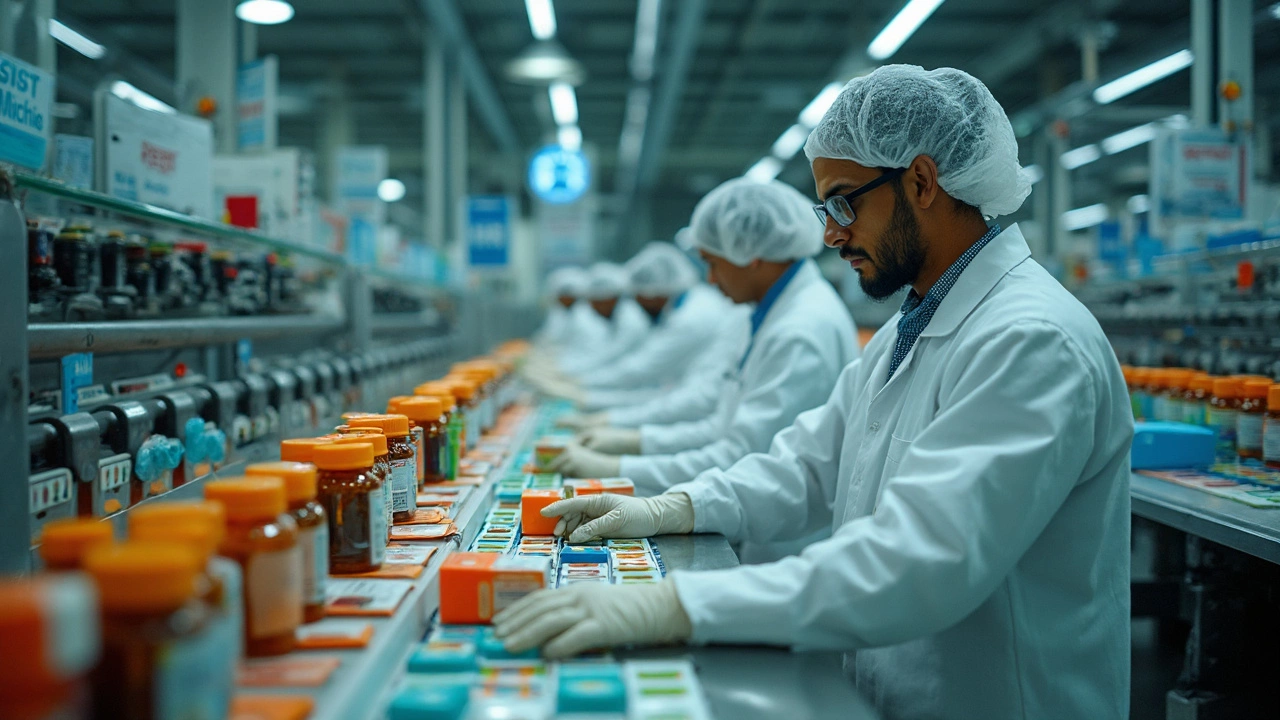- Top Textile Manufacturing Giants: Spotlight on Global Leaders in 2025 Jan 28, 2025
- Where Does CVS Get Their Drugs From? Inside the Pharma Manufacturer Pipeline Apr 27, 2025
- Who Makes the Best Furniture in the World? Top Manufacturers in India and Beyond Dec 4, 2025
- Which Car Brand is Made-in-Nigeria? A Guide for Auto Enthusiasts Apr 21, 2025
- Food Processing Unit Classification: Types and Examples Oct 25, 2025
Pharmacy Supply Chain in India – How It Works and Why It Matters
When you pick up a tablet at the pharmacy, you rarely think about the journey it took to get there. Behind every pill is a network of factories, warehouses, trucks, and people. In India, that network is getting faster and cleaner thanks to better planning and new technology. Understanding the basics helps manufacturers, distributors, and even shoppers see where value is added and where waste slips in.
Key Steps in the Pharma Supply Chain
The first step starts with raw material sourcing. Active ingredients often come from abroad or from specialized farms in India. Companies now use digital contracts to lock in price and quality, cutting delays caused by paperwork. Once the ingredients arrive, they move to a manufacturing plant where strict quality checks happen. Modern plants use automated mixers and real‑time monitoring, which reduces batch failures and keeps production steady.
After the drug is made, it enters packaging. Packaging lines that integrate barcode generators and tamper‑evident seals help trace each box from the factory to the pharmacy. Next, the finished product goes to a regional distribution center. These hubs are usually located near major highways or ports, letting trucks load and unload quickly. Temperature‑controlled trucks keep vaccines and biologics at the right temperature, preventing spoilage.
The final leg is delivery to pharmacies or hospitals. Many distributors now offer a “just‑in‑time” model, supplying small quantities frequently instead of large, infrequent shipments. This reduces stock‑outs and frees up shelf space for new medicines. With mobile apps, pharmacy owners can check stock levels in real time and request refills instantly.
Tech & Trends Shaping the Future
Data is the new fuel for the pharmacy supply chain. Sensors in warehouses feed temperature, humidity, and movement data to a cloud dashboard. If something goes out of range, an alert pops up and a manager can act before a batch is lost. AI algorithms scan this data to predict demand spikes—like flu season—so manufacturers can ramp up production ahead of time.
Blockchain is another buzzword that’s becoming useful. By creating an immutable record of every transaction, blockchain stops counterfeit drugs from slipping into the system. A simple scan of a QR code at the pharmacy can show the drug’s entire history, reassuring patients and regulators alike.
Regulations are also tightening. The Indian government now requires end‑to‑end traceability for all Schedule H drugs. This pushes companies to adopt integrated software that links suppliers, manufacturers, and distributors on one platform. While compliance adds a step, it also builds trust and opens doors to export markets that demand high transparency.
Lastly, sustainability is gaining traction. Recycling packaging, using electric delivery vans, and optimizing routes with GPS reduce carbon footprints. Companies that invest in green logistics not only meet new regulations but also appeal to eco‑conscious buyers.
Bottom line: A well‑run pharmacy supply chain saves money, speeds up delivery, and protects patients. If you’re a manufacturer, focus on digitizing contracts and tightening quality checks. If you’re a distributor, invest in temperature‑controlled fleets and real‑time tracking. And if you run a pharmacy, start using inventory apps that sync with your supplier’s system. Small upgrades add up, turning a complex chain into a smooth, reliable flow of life‑saving medicines.
Where Does CVS Get Their Drugs From? Inside the Pharma Manufacturer Pipeline
- Aarav Sekhar
- Apr 27, 2025
Ever wondered where CVS gets the medicines you see on its shelves? This article looks behind the scenes into CVS’s global supply chain, focusing on the key role of India’s pharmaceutical manufacturers. Get clear answers on how CVS chooses suppliers, ensures safety, and what all of this means for your trust and wallet. You'll also pick up a few tips to make smarter choices next time you fill a prescription.
